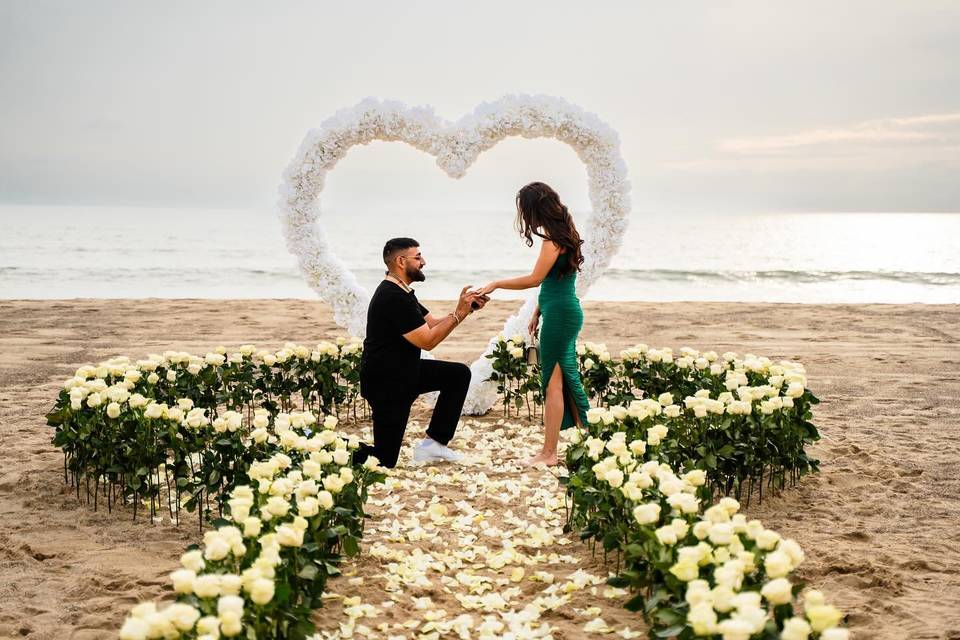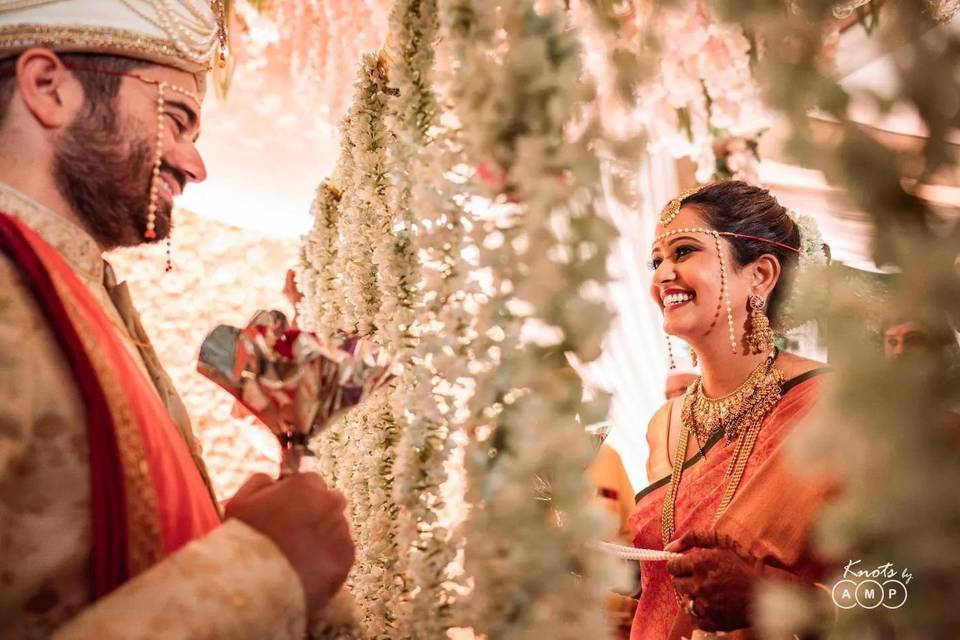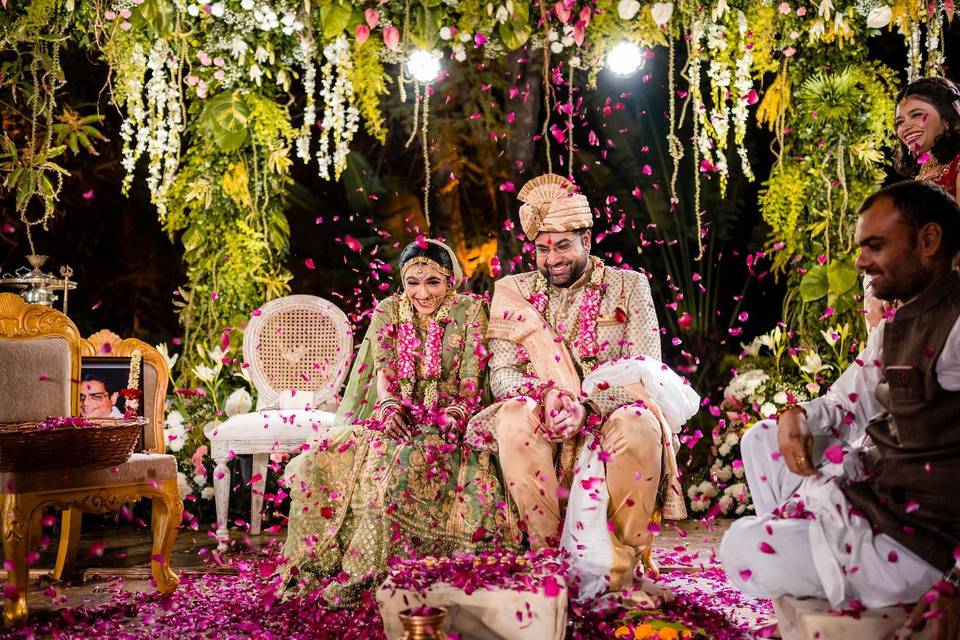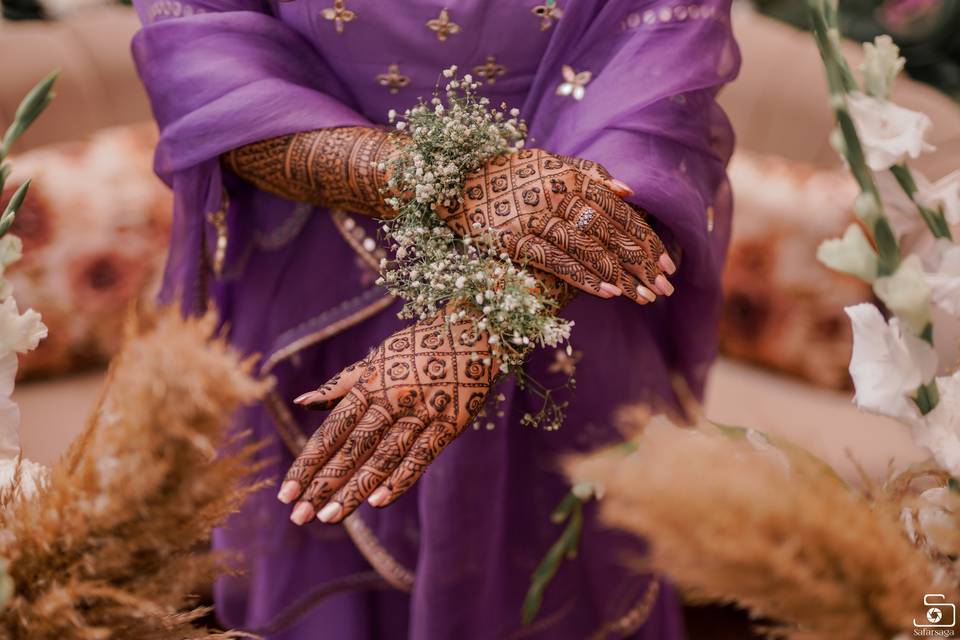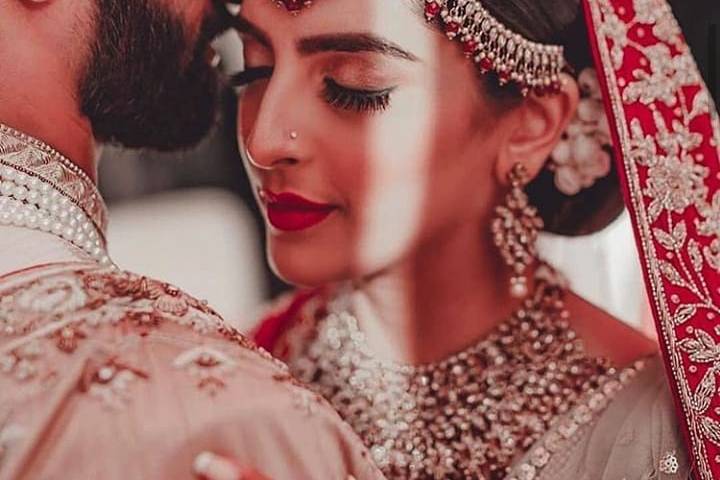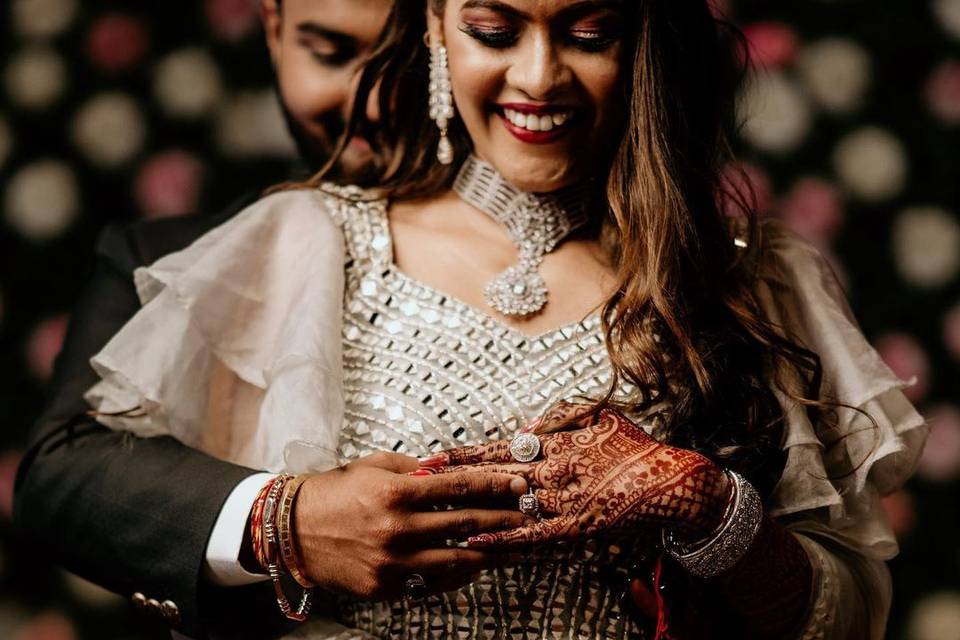Decoding Manipuri Wedding: the Colours & Beauty of North East
Here is a detailed walk through the mesmerising traditions of a Manipuri Wedding to help you celebrate the culture in a better way. Read on to know more.
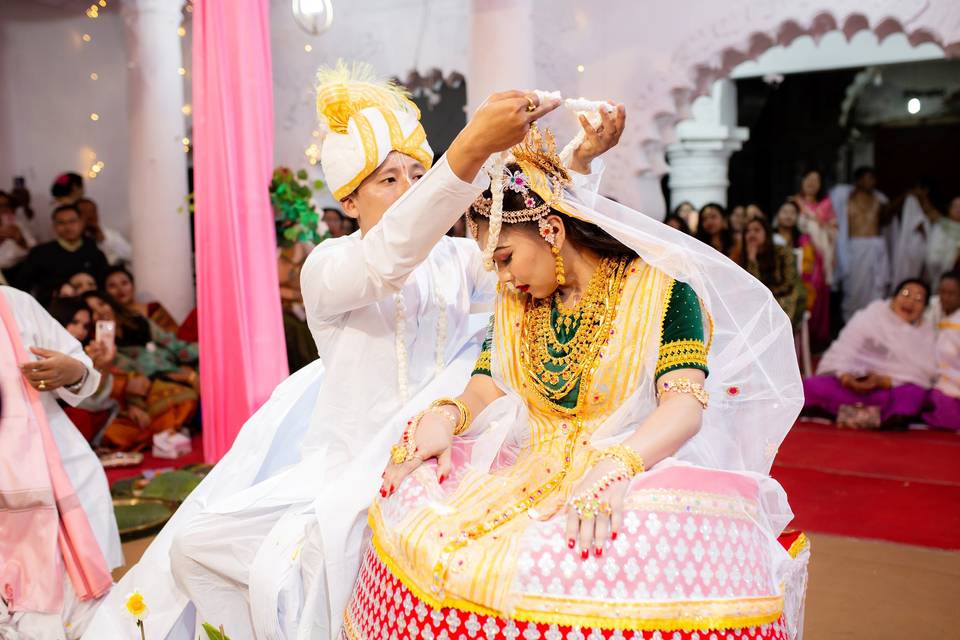
Among the many gems that India can be absolutely proud of, the deep-rooted cultural heritage is one of them. The colours of the varied cultures throughout our country is an impeccable one. To celebrate the charm of one of the most beautiful cultures in the northeast part of India, we are here to talk in details about the weddings in Manipur.
The breathtaking natural beauty of Manipur and the world-famous Raasleelas and classical dance of Manipur hold a very significant place in the cultural map of India. In fact, as soon as you google Manipuri wedding, the images that pop up on your screen are sure to blow your minds - the spectacular jewellery, the stunning dresses and gorgeous brides.
Here is a detailed walk, through the mesmerising traditions of a Manipuri wedding in all its glory and fun packaged with love. Read on to know more.
Pre Wedding Ceremony
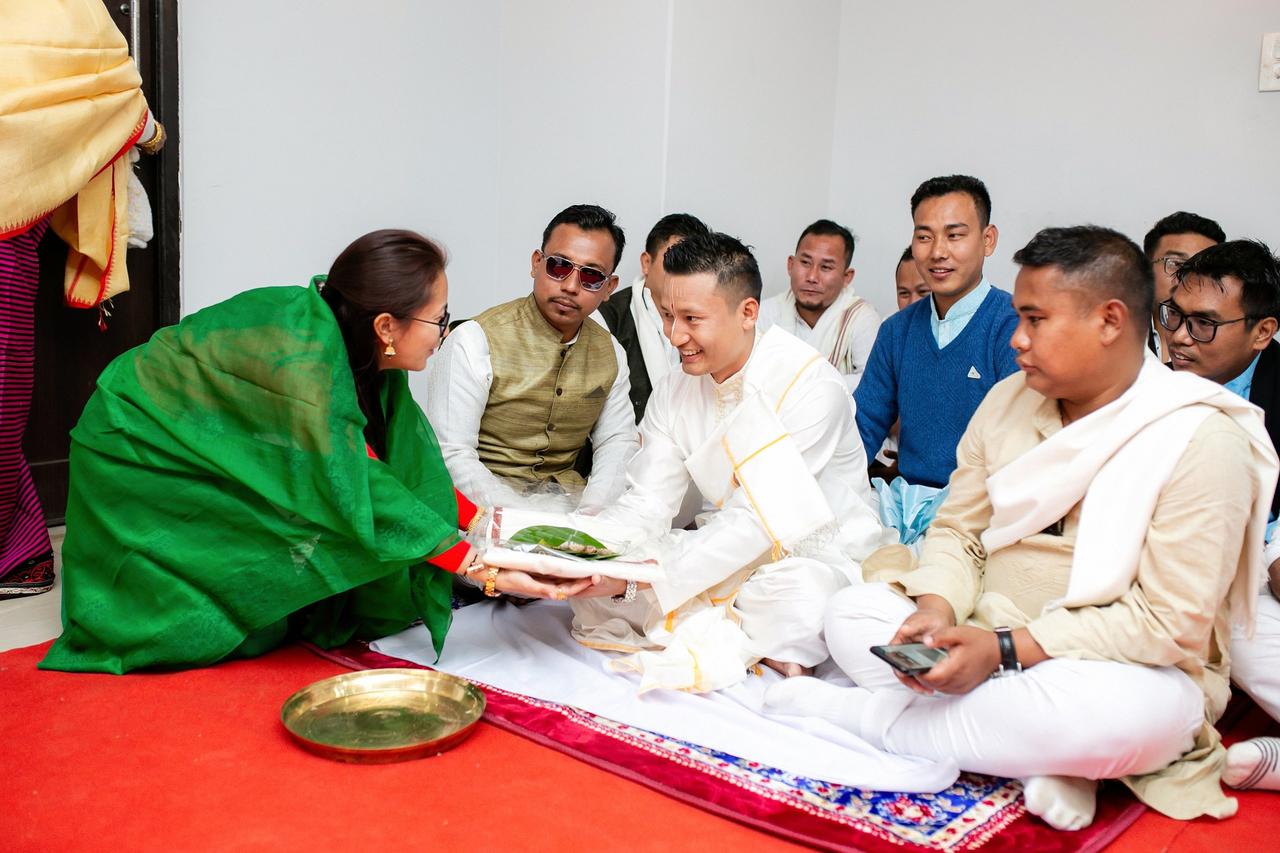
Like every Indian wedding ceremony, Manipuri weddings also kickstart their weddings with a host of pre-wedding ceremonies that are celebrated way before the actual wedding day. There are two types of weddings in Manipur - elopement and arranged marriage.
In an elopement, 3, 5 or 7 male members of the groom’s family visit the bride’s family to inform them that their son has their daughter. After this formal ceremony of informing the girl’s family, the bride is then brought into the groom’s house. Later in the evening, the bride steps out with the elderly female members of the groom’s family.
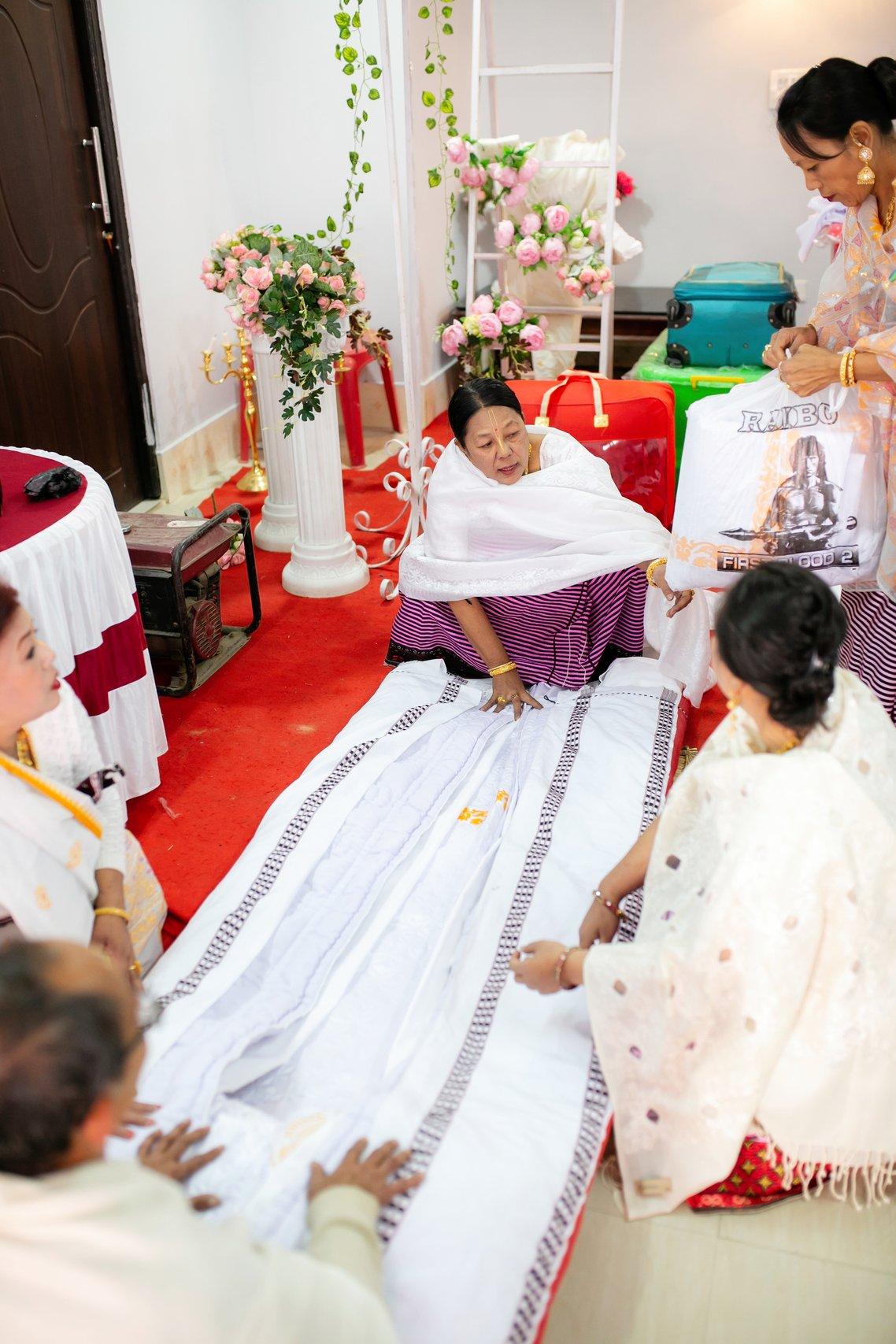
The only difference between an elopement and the arranged social marriages is the way the bride and the groom meet. In an elopement, it is mostly where the bride and groom have chosen each other and for an arranged marriage the drill is typical of all.
The groom’s family visits the bride’s family thrice until the final date is fixed. The bride and groom’s family also decide on what gifts are to be given to the Pala - the woman who sings Kirtans at the wedding.
Hinaba
A typical traditional or arranged Manipuri wedding starts with the Hinaba - the first formal meeting between the bride and groom’s family. Hinaba is more like a formal occasion rather than a ceremony where the groom’s family visits the bride’s house and the to-be-wed couple’s horoscopes are matched. Once things are in place, the families promise to meet on a later date.
Yathang Thanaga & Waraipot Puba
The bride’s family (mostly her parents) visit the groom’s to formally give consent for the wedding during the Yathang Thanaga. This is then followed by the Waraipot Puba where the groom’s family visits the bride’s family to reciprocate the reverence and joys. These ceremonies are almost always accompanied by food items and other gifts.
Also Read: Decoding Odia Marriage: the Beauty of Their Traditions & Rituals
Hejiapot
The Hejiapot ceremony is also the formula engagement ceremony in Manipuri culture. In the Hejiapot ceremony, the groom’s family visits the bride’s with food, gifts, fruits, jewellery and clothes. They also carry the ring that the groom and bride wear. The twist to this ceremony in comparison to a typical engagement ceremony is that the bride and groom never meet before the actual wedding ceremony so this Hejiapot is celebrated between the elders of both the families.
After the ceremony is celebrated, the priest announces the wedding date. The groom’s family leaves the place and at night this Hejiapot is continued to a party where the bride celebrates with her family and friends.
Bor Baton & Leilenga
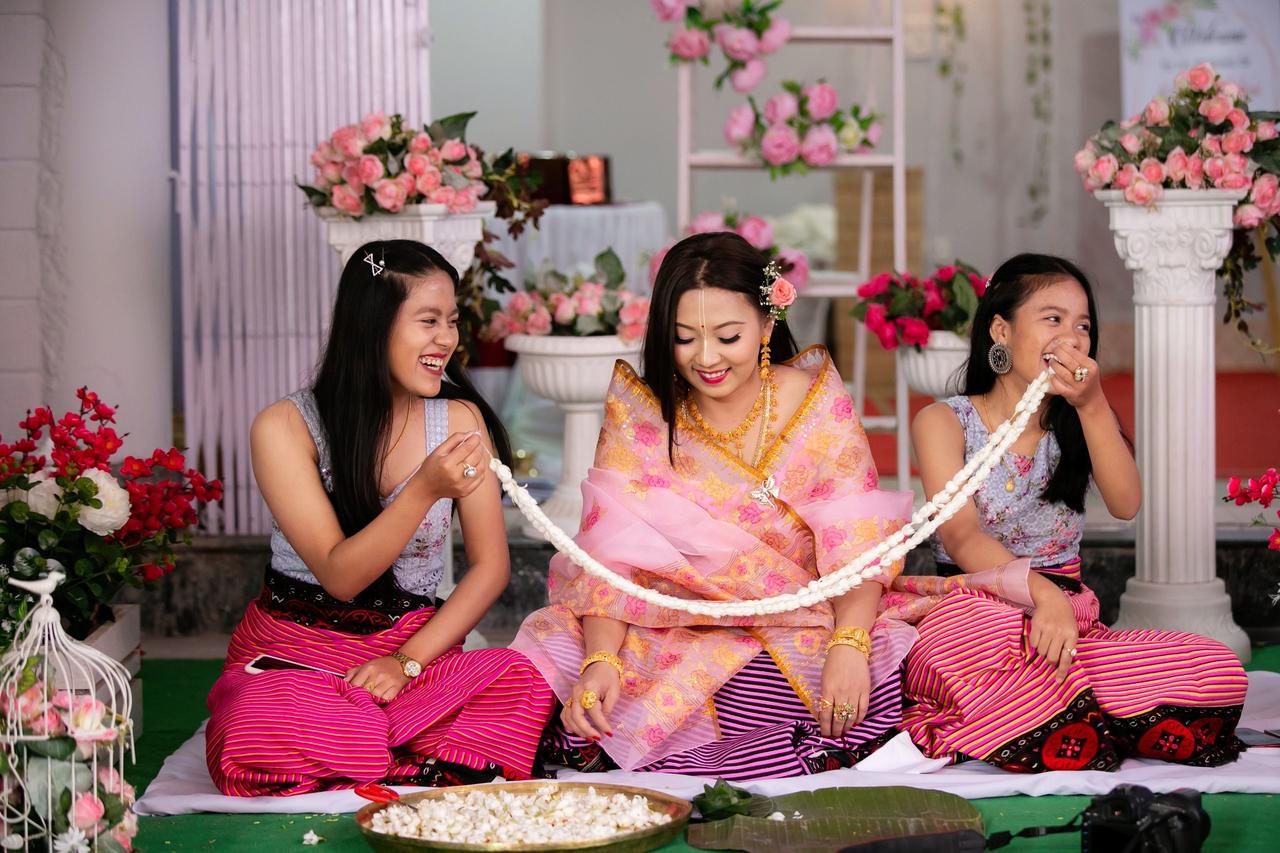
This ritual in the Manipuri culture involves a young boy going to the groom’s house to invite him for the wedding early morning on the day of the ceremony. While this takes place at the groom’s house, the Leilenga takes place simultaneously at the bride’s house. In Leilenga, the bride herself weaves two garlands - for herself and the groom, in the presence of the priest who chants holy prayers for their blissful married life.
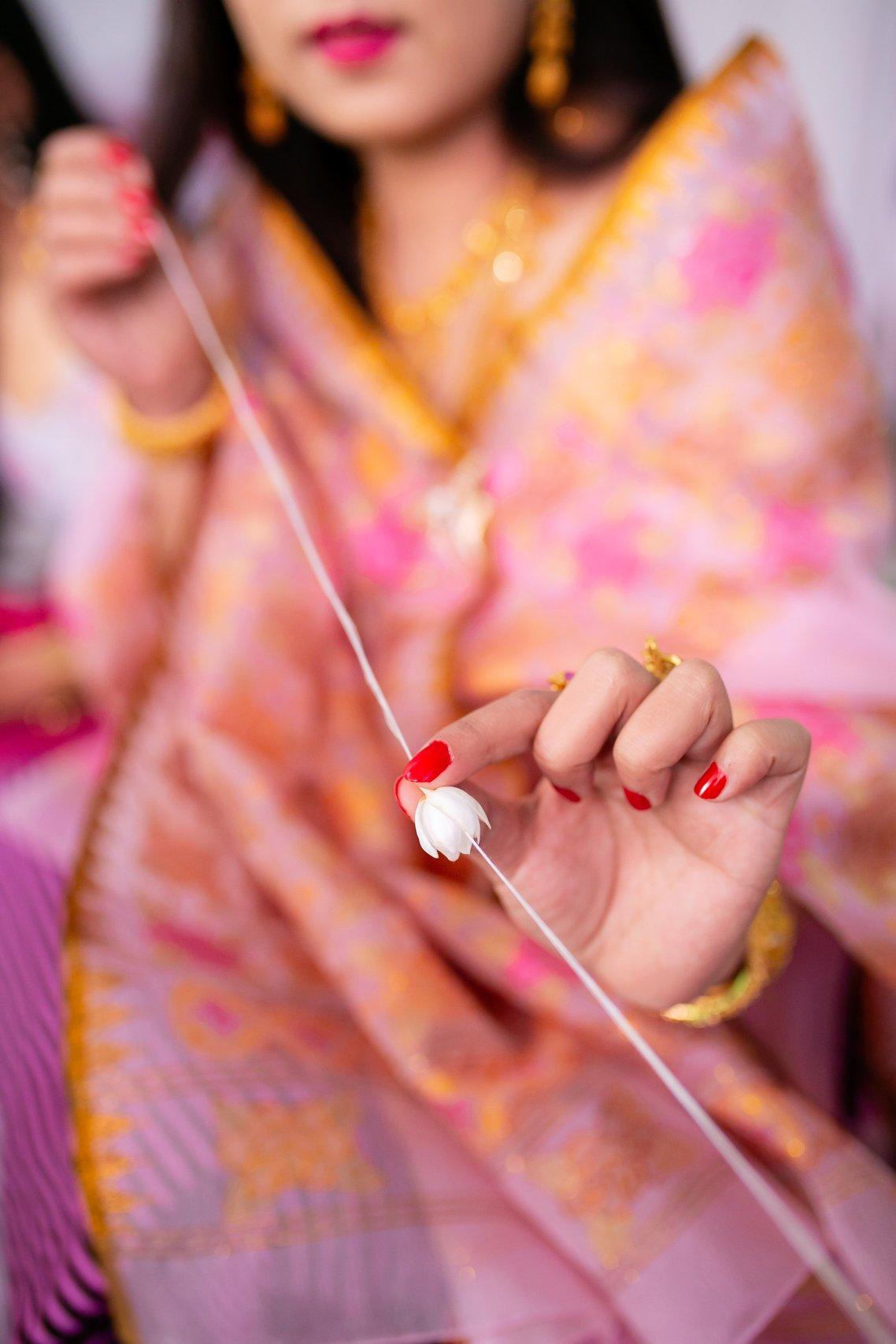
These garlands are made of a particular flower called Kundo in the local dialect. The bride has her last lunch with her parents after this.
The Wedding Ceremony, Luhongba
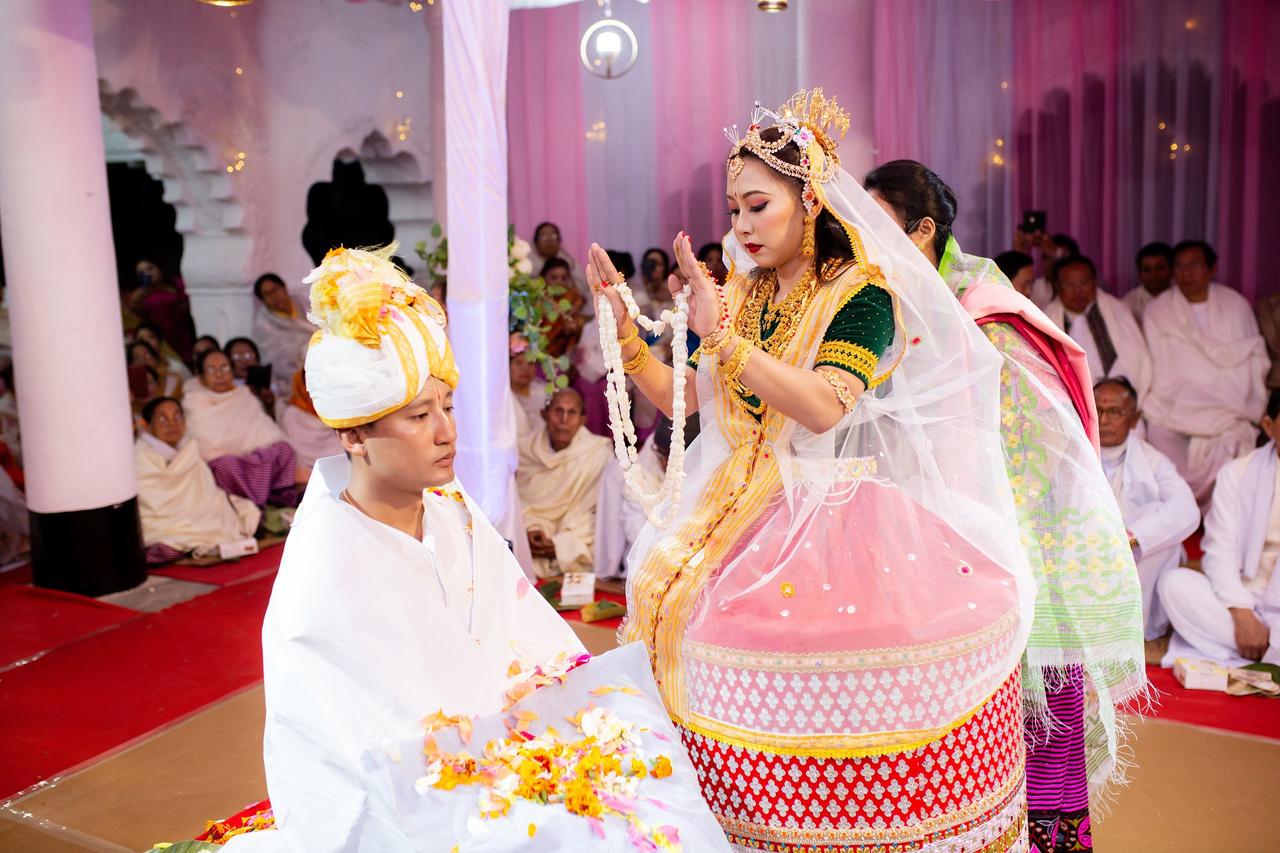
Manipuri weddings take place at the bride’s house. The ceremony begins with the groom and his family arriving at the bride’s house and being greeted by 3 female elder members of the bride’s family. The groom’s family is greeted with betel leaves and betel nut on a plate covered with banana leaf.
The wedding mandap or the seating arrangement is made around a tulsi plant and even the ceremonies to follow are also centred around the tulsi plant. The groom sits with the priest as he chants the prayers and the bride is called later.
The bride and the groom put their hands on each other’s hands and the bride’s mother binds it with thread and blesses the couple with a plate that has a coconut, banana and betel leaf and betel nut. Once the couple is blessed by the bride’s mother, the other elders bless them too and even give money on the plate. The bride takes 7 circles around the groom who is seated and the bride and groom exchange the garlands.
Also Read: Here's a Complete Traditional Guide to an Assamese Wedding
Post-Wedding Rituals
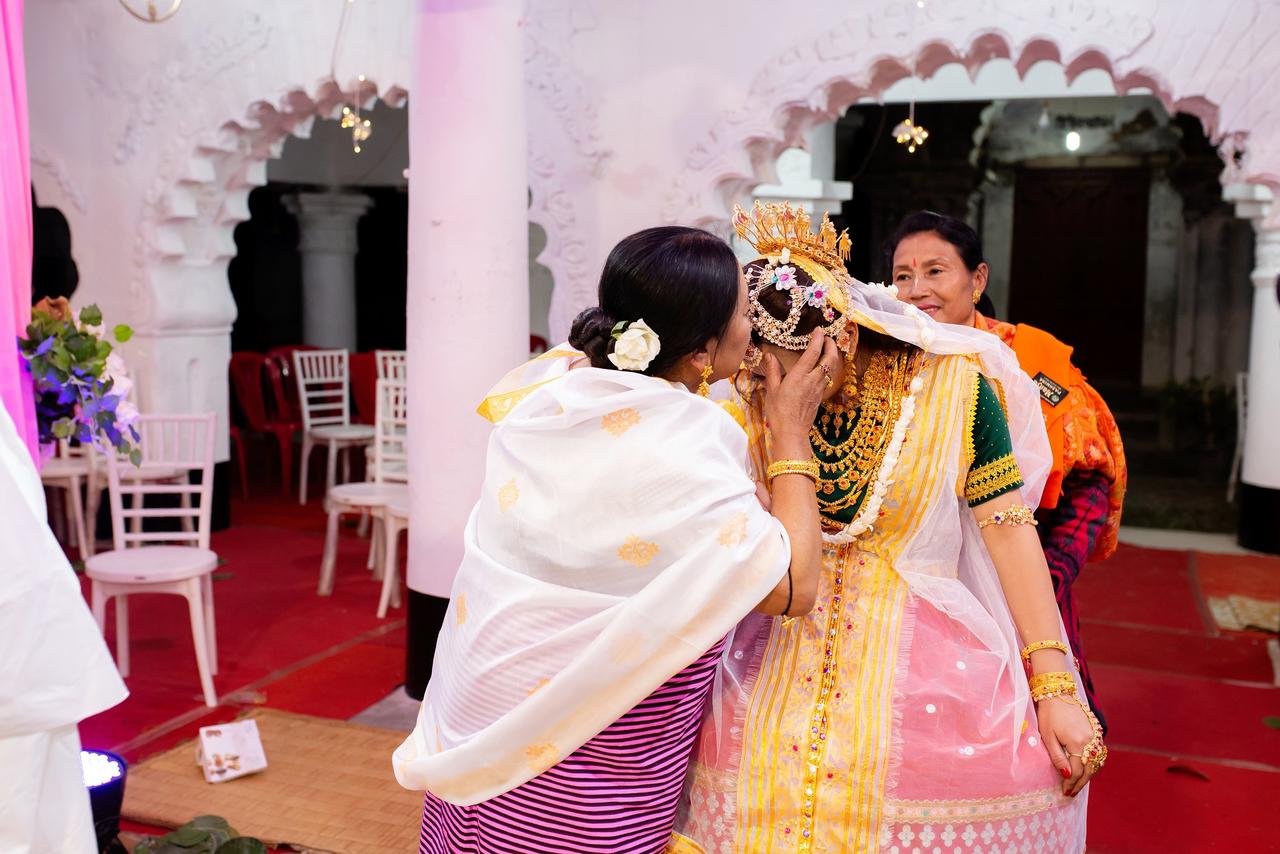
Following the wedding, 3 members each from the bride’s and groom’s family come to bless the bride and groom betel leaf and nut turn by turn followed by the Vidaai ceremony.
This ceremony is followed by a ceremony that takes place at the groom’s house where the bride’s uncle does a ceremony called Phamnando. The bride carried 2 beds along with her to her in-laws’ - one single and one double with the single bed playing a very important role in the ceremony where the uncle puts his hand on the single bed to bless her for a blissful fertile life.

The bride is seated on the bed where the other elders come and give blessings to her.
This is often followed by a joyous meal/reception. However, the traditional reception happens 5 days later when there is a feast at the bride’s house called Chaoba.
Also Read: Decoding a Bengali Wedding: the Beautiful Traditions of a Biye
Wedding Attire
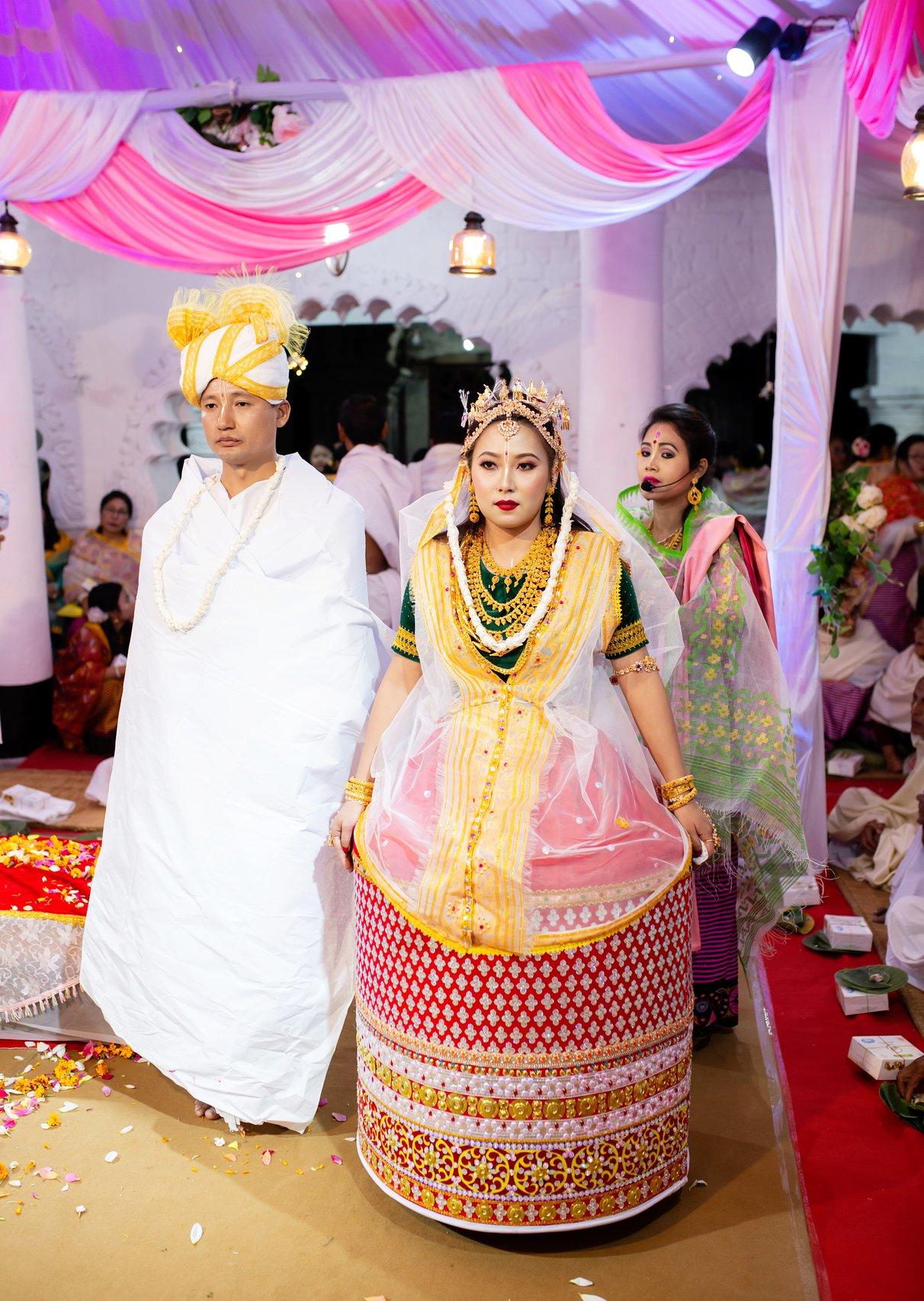
The bride wears a traditional Rasleela dress for her wedding function. Being ardent followers of Radha and Krishna, the drum-like Manipuri bridal dress called Potloi has significant religious motifs hand-embroidered by skilled traditional weavers and they have been done since ages. Most millennial brides prefer to rent the Potloi as well as the jewellery too. Some brides, however, plan to make their own sets.
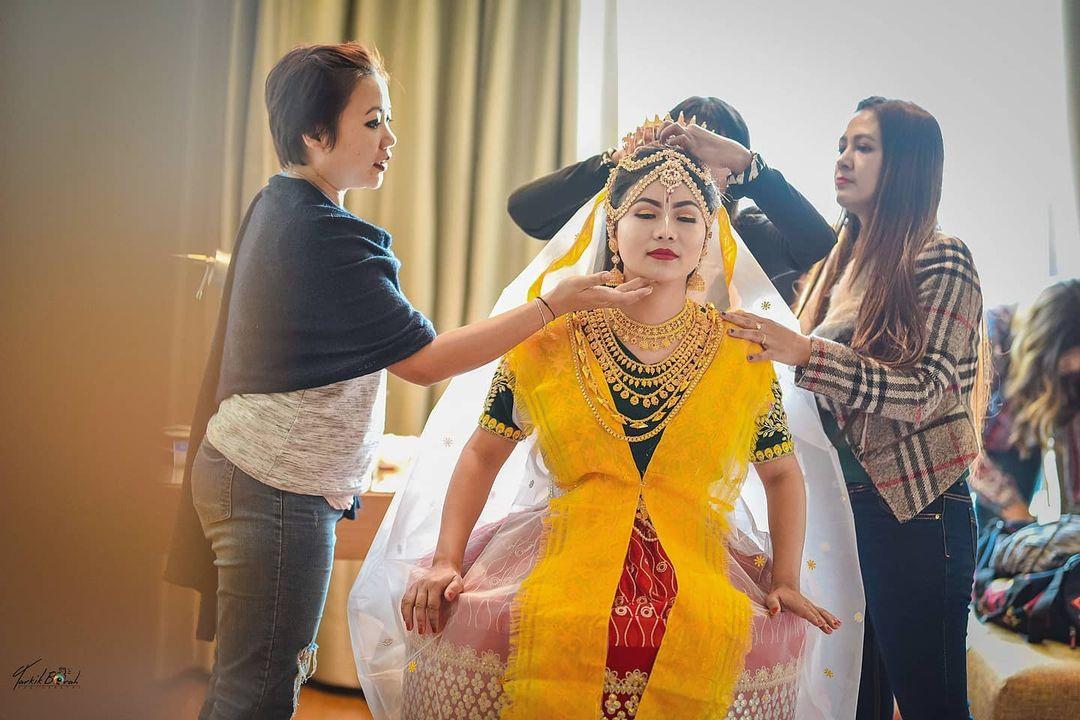
Likhom is the long necklace and apart from that the brides flaunt two different sets of Merei and must be included in the bride’s attire. There is also a headgear that the brides must wear.
The groom wears a plain simple dhoti and kurta and a turban with a shawl. He is covered in a plain white shawl during the wedding as a mark of purity and serenity.
Manipuri wedding celebration with all the traditions and ceremonies is a series of enchanting moments that will give you memories forever. Right from the betel leaf and betel nut to the Potloi - every element involved in a Manipuri marriage ceremony is sure to make you feel absolutely wonderful and at the same time blow your minds away.
Tell us your favourite part of a Manipuri wedding or why do you look forward to attending one in the comments below.
- With valuable inputs from Apui Sapam.





